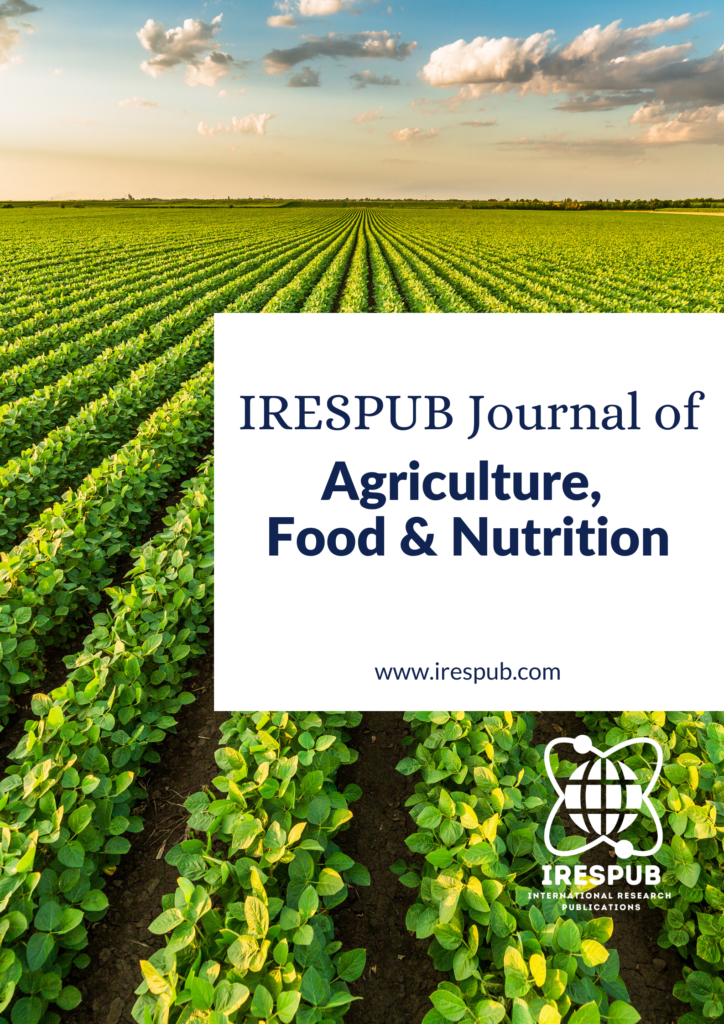
Year Launched: 2021
Journal Menu
- Scope & Research Areas
- Instructions for Authors
- Article Processing Charge
Journal List
- Natural & Applied Sciences
- Life Sciences
- Business Management
- Education & Literature
- Humanities & Cultural Studies
- Medical & Dental Sciences
- Engineering & Computer Sciences
- Agriculture, Food & Nutrition
- Environmental & Material Sciences
- Wellness & Lifestyle Management
- Arts & Ideas
- Law, Policy & Religion
Study of the soil-ecological state of the objects of study on the example of the foothill zones of Azerbaijan in the lesser Caucasus under various crops
Volume 1, Issue 1, Sep-Oct 2021 | Page 13-19 | PDF (287K) | Pub. Date: September 29, 2021
Author(s)
H. Aliyev*, Z. Kh. Mustafaev; Institute of Soil Science and Agrochemistry of Azerbaijan National, Academy of Sciences, Baku, Republic of Azerbaijan
Abstract
The studies were carried out on the following types of soils, most widespread within Azerbaijan: gray-brown, gray-earth-meadow, gray-brown and mountain-gray-brown. Common to these soils is the deep penetration of humus into the soil profile and its very slow decrease down by profile. According to the results of our research, it is proved that in the soil the humus content in the 25-50 cm layer is from 2.00 to 2.12%, and the total nitrogen is from 0.112 to 176%, the content of mineral forms of nitrogen is almost identical with the previous soils, while some an increase in the content of phosphorus and exchangeable potassium relative to other studied soils. The amount of carbonates in these soils is low (CaCO3 -6.4-10.4%). The absorbed bases are dominated by calcium, which is 60.3-76.7% of the total exchangeable cations. The amount of exchangeable sodium in the absorbed complex is low, 2.7-4.7% of the total, while the content of exchangeable magnesium is quite high. The moisture regime of mountain-gray-brown soils is determined mainly by the amount of atmospheric precipitation and the course of evaporation of soil moisture.
Keywords
Carbonate Content; Leaching; Mountain-Brown; Gray-Brown; Gray-Meadow; Gray-Brown (Chestnut); Gray-Brown (Chestnut) Soils; Erosional Relief; Rainfed
Cite this paper
Aliyev, H., Mustafaev, Z. Kh. (2021), Study of the soil-ecological state of the objects of study on the example of the foothill zones of Azerbaijan in the lesser Caucasus under various crops, IRESPUB Journal of Agriculture, Food & Nutrition. Volume 1, Issue 1, Sep-Oct 2021, Page 13-19
References
[1] Agaev N. Agrochemical grouping of soils in the Lesser Caucasus by the content of nutrients and their effect on potato productivity. Report VASKHNIL No. 5, 1989, 15-18 pages.
[2] Genesis, geography, and efficient use of forest lands of Azerbaijan. Works of the Institute of Geography of ANAS; volume XXV, Baku, 1990, pp. 51-53.
[3] Land map of Azerbaijan. 1991, 1: 600000
[4] Agroclimatic Atlas of the Republic of Azerbaijan. Baku, 1993, 20-22 pages.
[5] Alekperov K. A. Protection of soils from erosion in Azerbaijan. SSR. 1979, 220 pp.
[6] Alekperov K. A. Soil erosion map and land protection. Moscow, 1980.219 p.
[7] Akimtsev V.V. Soils of the Ganja region. 1928, 107 pp.
[8] Antonov B. A. Small Caucasus. In the book. “Geomorphology of Azerbaijan” Publishing house of the Academy of Sciences of Azerbaijan. SSR, Baku, 1959, 193 p.
[9] Azizbekov Sh.A.Geology and petrography of the northeastern part of the Lesser Caucasus. Institute of Geology. Gubkin AN Azerb. SSR. Baku, 1947, 47 p.
[10] Babayeva K. and others; Surface improvement of eroded pastures around Gadabay region. Scientific fund of the Institute of Soil Science and Agrochemistry. Baku, 2014, 55 pages.
[11] Gulahmedov A. Land cover of Ilich Yolu collective farm, Slavyanka village, Gadabay region and ways of its efficient use. Scientific fund of the Institute of Soil Science and Agrochemistry. Baku, 1980, 26 pages.
[12] Ibrahimov AA Study of erosion in mountain-meadow and mountain-forest zones of Shamkhor (Shamkir) and Gadabay regions. Scientific fund of the Institute of Soil Science and Agrochemistry Baku, 1972, 170 pages.
[13] Ibrahimov AA Adverse effects of soil erosion on the ecological situation in Azerbaijan and ways to prevent it (effective use of eroded lands in Azerbaijan v) Proceedings of the Institute of Erosion and Irrigation. Volume II. Baku, 1998, pp. 40-43
[14] Molchanov A. Forest and climate. Ed. “AN SSR”. Moscow, 1962, 127 p.
[15] Mustafayev HM Measures to combat water and wind erosion. Baku, 1978, 228 p
[16] Mustafayev X.M.Soil erosion and control measures. Azerbaijan State Publishing House, Baku, 1974, 175 p.
[17] Braude I. Soil erosion, drought and control of them in the Central Administrative Center, Nauka Publishing House, Moscow, 1965, 104 p.
[18] Williams V. , General agriculture with the basics of soil science, S / khozgiz, 1931, 375 p.
[19] Volobuev V. Soils and climate. Ed. AN. Azerb.1953, 236 pp.
[19] Volobuev V. Soil ecology. Ed. AN Azerb. SSR, Baku, 1963, 259s.
[20] Zakharov S. Fighting forest and steppe in the Caucasus. Soil science. No. 4, 1935, pp. 51-55.
[21] Zaslavsky M. Soil erosion and slope agriculture. Chisinau, 1966, 318 p.
[22] Zeynalov A. Forest soils of the Murovdag ridge of the Lesser Caucasus. “Izv. AN Azerb. SSR “,1949,No. 1, 70-74p.
[23] Zonn S. Soil moisture and forest plantations. Ed. AN SSR. Moscow, 1959, 168 p.
[24] Ostrovski Y., Aliyev Z., et al. Using GIS programs in the study of soil erosion in Azerbaijan and determining the conditions for their protection. Educational materials. Ed. ITP. Poland, 2010, 117 p.

